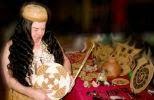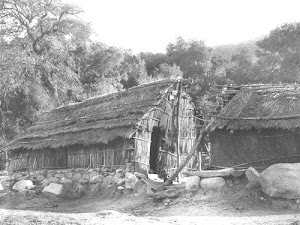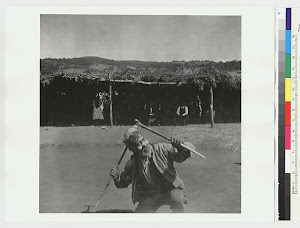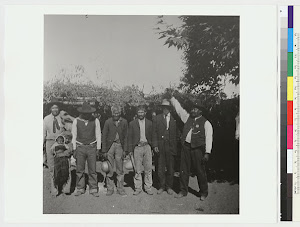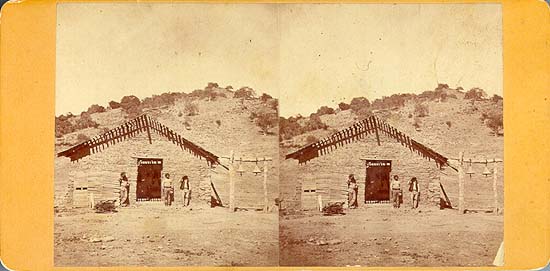http://bowersmuseum.blogspot.com/2008/03/object-of-week-mission-indians-dispatch.html
Click the link above to view the Mission Indian dispatch pouch
Object of the Week: Mission Indians Dispatch Pouch
Dispatch Pouch, c.1780-1820 Mission Indians, Southern California Leather and California Black Bear Fur Gift of Deborah L. Anderson Bowers Museum # 97.20.1 String bags such as this were used to carry messages from one California mission station to another by Native American runners. Few dispatch bags have survived. Its construction is Indian, in nature, with European influence in the unique and intricate embroidery and fringe application. The body of the bag is leather with three internal compartments. The main chamber was used to house documents, and the two smaller compartments provided a space in which the runner could carry food such as nuts, seeds, berries, grain, herbs or dried fish. The outer flap is trimmed with the fur of the California Black Bear. This trim, along with being ornamental, was effective in protecting dispatches during inclement weather. Runners were chosen by the mission padres for their speed and stamina. It was considered a great honor to be the bearer of religious doctrine. Dispatch letters, new teachings in theology, convert statistics from mission to mission, and ground work for mission expansion were the types of documents transported in this bag. Native peoples who converted to Christianity simply became "Mission Indians" in spite of their tribal affiliation. Some of the tribes represented were: Pomo, Hupa, Yokuts, Miwok, Maidu, Wintun, Shasta, Karok, Yurik, Costanoan, Salinan, Chumash, Cahuilla, Chemehuevi, Panamint and Mono.
Friday, March 28, 2008
Dispatch Pouch, c.1780-1820 Mission Indians
Posted by
Karen Vigneault Librarian
at
7:45 AM
0
comments
![]()
Thursday, March 27, 2008
PHOTOS FROM RANCHO DAYS
This project was supported in whole or in part by the U.S. Instituteof Museum and Library Services under the provisions of the Library Services and Technology Act, administered in California by the State Librarian. In addition, the City of Anaheim, the Anaheim Historical Society, Native Sons of the Golden West and Anaheim Public Library have provided additional funds for the creation of this digital archive of nearly 2,000 photographs of the City of Anaheim.
These unique local history resources have been organized for easy browsing by Anaheim residents, scholars, and history buffs throughout California and the world. The categories on this
web page are based onthe Anaheim City School District's local history curriculum for third grade classes.
http://www2.anaheim.net/article.cfm?id=407
Posted by
Karen Vigneault Librarian
at
9:38 AM
1 comments
![]()
